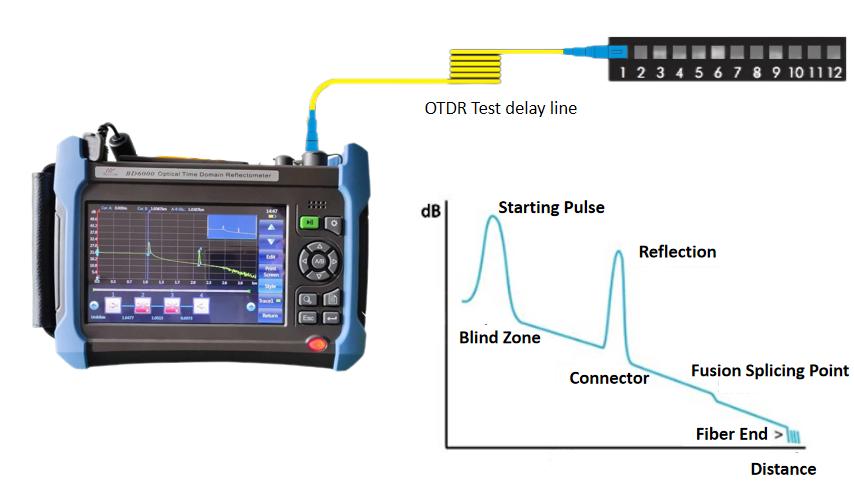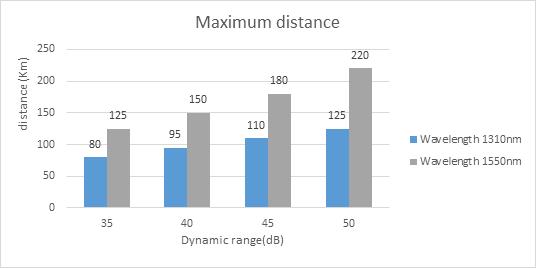In the world of fiber optics, where high-speed data transmission is vital for communication systems, ensuring the integrity of the fiber network is a critical task. This is where the Optical Time Domain Reflectometer (OTDR) comes into play. As one of the most powerful tools in the fiber optics technician’s toolkit, the OTDR is used to troubleshoot, analyze, and maintain fiber optic networks by providing detailed insight into the fiber’s performance.
Let’s dive into what OTDRs are, how they work, and why they are crucial for fiber internet troubleshooting.What is an OTDR?
An Optical Time Domain Reflectometer (OTDR) is an electronic testing device used to measure the characteristics of an optical fiber. It works by sending a series of light pulses into the fiber and then measuring the amount of light that is reflected back. These reflections provide valuable information about the fiber's condition, such as the location and severity of faults or signal loss.
OTDRs are primarily used to locate faults in fiber optic cables and to analyze the overall health of a fiber network. They are invaluable for both installation and maintenance of fiber optic systems.
How Does an OTDR Work?
The working principle of an OTDR is fairly simple:
- Pulse Emission: The OTDR sends a laser light pulse into the fiber. This pulse travels along the fiber optic cable.
- Light Reflection: As the pulse travels, some of it will encounter imperfections or connectors along the fiber. These imperfections cause the light to reflect back toward the OTDR.
- Data Analysis: The OTDR measures the time it takes for the light to return and the intensity of the reflection. By analyzing these parameters, the OTDR can detect issues such as signal loss, fiber bends, splices, connectors, and even physical breaks in the fiber.
- Distance Calculation: The OTDR uses the time it takes for the light to return to calculate the distance to the fault, providing an accurate reading of where the issue lies in the fiber.

This process allows technicians to quickly pinpoint problems in a fiber optic network, even in long or complex installations.
Why is the OTDR Essential for fiber internet troubleshooting?
Fiber optic cables are extremely delicate and highly sensitive to damage, whether it’s from physical stress, environmental factors, or improper handling. The Optical Time Domain Reflectometer (OTDR) is designed to locate faults and degradation quickly and efficiently. Here’s why it’s indispensable for fiber optic troubleshooting:
1. Accurate Fault Detection
When an issue occurs in a fiber optic network, pinpointing the exact location of the fault is crucial. The OTDR provides precise measurements that tell you not only where the fault is located but also the severity of the problem. Whether it’s a broken fiber, faulty splice, or connector issue, the OTDR helps you find it with pinpoint accuracy.
2. Quick and Non-Invasive Testing
One of the major benefits of using an OTDR is that it allows you to test the fiber without having to physically inspect every inch of it. The testing is done remotely, meaning the fiber does not have to be disturbed, which is especially useful in long-distance or underground cable installations.
3. Provides Detailed Fiber Network Analysis
Beyond just finding faults, OTDRs can also provide a comprehensive view of the entire fiber network. This includes detailed analysis of the fiber’s loss characteristics, splice losses, fiber length, and the quality of connections along the fiber path. This data is critical for ensuring optimal performance and for preventative maintenance.
4. Reduced Downtime and Faster Repairs
When fiber faults occur, they can lead to significant downtime, which in turn can impact services and operations. Using an OTDR helps technicians quickly locate the source of the issue and make the necessary repairs, thereby minimizing service interruptions and reducing troubleshooting time.
Key Features of an OTDR
Not all OTDRs are created equal. Different models come with varying features that cater to different needs and environments. Here are some key features to consider when choosing an OTDR:
- Dynamic Range: The dynamic range indicates how far along the fiber the OTDR can detect faults. A higher dynamic range means that the OTDR can effectively test longer fibers or fibers with high loss.
- Event Dead Zone: This is the minimum distance from the OTDR where it can reliably detect faults. A smaller dead zone allows the OTDR to detect faults near connectors or splices more accurately.
- Wavelength Support: OTDRs can operate at different wavelengths (commonly 1310 nm and 1550 nm). Some OTDRs support multiple wavelengths, which is important for testing different types of fiber and applications

- Touchscreen Interface: Many modern OTDRs come with intuitive touchscreens, making it easier to navigate and interpret results.
- GPS and Mapping: Advanced OTDRs include GPS functionality, allowing technicians to map fiber locations and record testing data alongside geographic coordinates for better documentation and future troubleshooting.
Conclusion
The Optical Time Domain Reflectometer (OTDR) is an essential tool for fiber internet troubleshooting, providing fast, accurate, and non-invasive testing of fiber conditions. By detecting faults, measuring fiber loss, and offering detailed analysis of network performance, the OTDR helps technicians maintain the health of fiber optic systems, reduce downtime, and ensure reliable data transmission.
As the demand for faster, more reliable communications continues to grow, having the right tools to troubleshoot and maintain fiber optic networks is more important than ever. The OTDR, with its precision and capabilities, remains one of the most valuable tools for fiber internet troubleshooting, making it a must-have in any fiber technician’s toolkit.
Related article: OTDR Software for Windows: How to Read OTDR testing reports in Microsoft System
OTDR vs OLTS Understanding the Difference between OLTS and OTDR